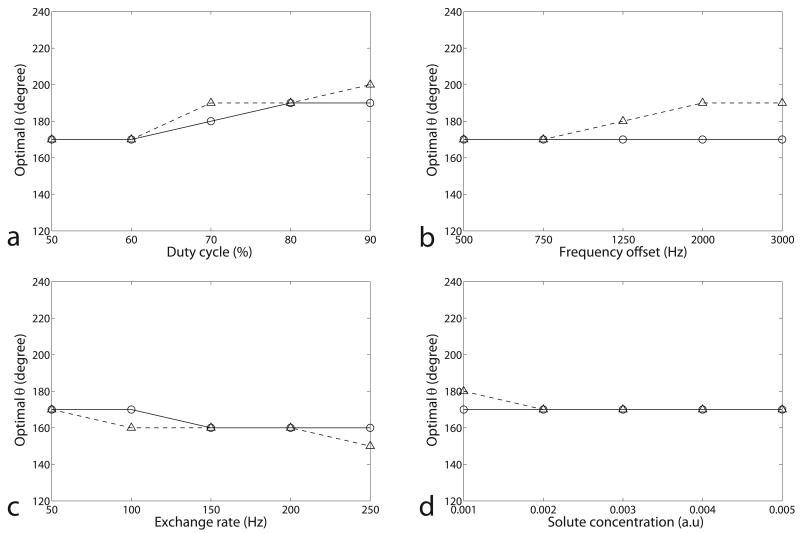FIG. 4.
Simulated optimal θ as a function of duty cycle (a), frequency offset (b), exchange rate (c), and solute concentration (d) in the two-pool (triangle) and three-pool model (circle). The non-specified sample parameters are from the fitting results of a CW-CEST experiment on a creatine/agar phantom. Calculations were performed for a range of θ (140° – 220°) with a step of 10°, resulting in discrete jumps. For (b), (c), and (d), dc = 50%. Note that the optimal θ, which is around 180°, is roughly independent of the duty cycle, frequency offset, exchange rate, and concentration.

